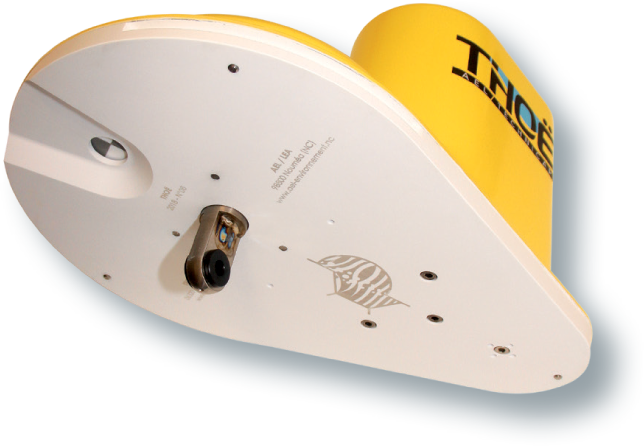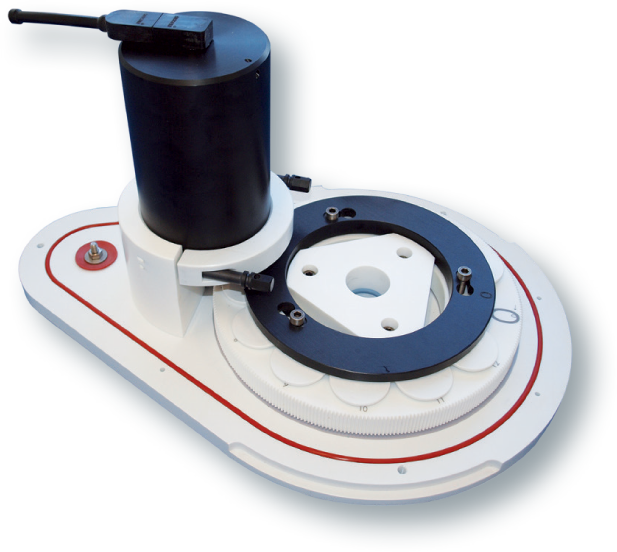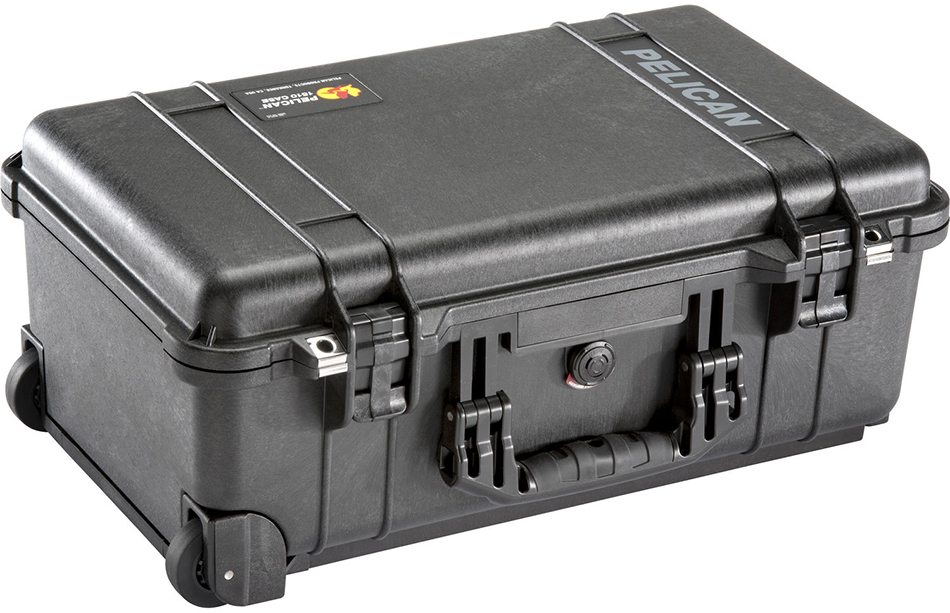Welcome to AEL/LEA New Caledonia
Welcome to AEL/LEA New Caledonia
DGT® is a simple commercially available device for measuring pollutants, nutrients and other components in water
THOË ® is a patented automatic and autonomous sampler using DGT® devices for the analysis of both dissolved metals and organic compounds in seawaters and freshwaters. Fully programmable, THOË® makes it possible to provide on a monitoring site concentrations time series recorded over several months.



Dimensions
This case holds a THOE sampler
The THOË autosampler does not directly measure contaminants, but uses commercially available passive samplers (DGT research) that are inserted into the autosampler. These passive samplers (DGT) are used to measure a variety of chemical contaminants. The range of DGT devices available can be found on DGT research’s website (www.DGTresearch.com).
Passive sampling is an environmental monitoring technique involving the use of a collecting device (DGTs) to accumulate chemical pollutants in the environment over time. This is in contrast to grab or spot sampling, which involves taking a sample directly from the water of interest at one point in time. In passive sampling, average chemical concentrations are calculated over a device's exposure time, which avoids the need to visit a sampling site multiple times to collect multiple representative samples.
Diffusive gradients in thin films (DGT) devices passively sample chemical pollutants. They are composed of a plastic piston and cap, with a window that exposes a binding gel, diffusive gel, and filter membrane to the water being sampled. In most cases, the range of DGT devices can be used in both freshwater and marine environments. Once the mass of accumulated contaminants on the DGT sampler is known, the time averaged water concentration of the chemical pollutant can be calculated.
Passive samplers relies on the establishment of a steady concentration gradient through a plane parallel diffusive medium (referred to as the diffusive gel), one face of which is in contact with the water containing the chemical contaminant and the other in contact with a sorbent layer (or resin), which traps any target contaminant that leave the diffusive medium to enter the sorbent layer.As a result, contaminants concentrate on the sorbent layer and time averaged water concentrations can be calculated
Passive samplers (DGT) can in many cases achieve quantification limits lower than traditional techniques. Chemical contaminants accumulate on the sorbent layer of the passive samplertherefore, the longer the sampler is exposed to the water the lower the quantification limit that can be achieved.
DGT devices are placed in the THOË auto sampler and THOË then sequentially exposes each DGT devices over a period of time, allowing uninterrupted time series to be collected. The sampler can expose up to 12 DGT devices over a single deployment period.
When we refer to deployment time it is the time the THOË sampler is submerged, whereas exposure time is the time each DGT devices is programmed to be exposed to the environment.
Other automatic water samplers usually involved collecting discrete water samples in containers. The advantage of using DGT devices combined with the THOË auto-sampler is that each DGT devices collect chemical contaminants over the exposure period meaning the sample will capture contaminant concentration fluctuations over the whole exposure period. In many cases this reflects more accurately contaminant concentrations that are bioavailable to organisms than other sampling methods. Traditional discrete sampling does not do this, since collected samples only represent a single moment in time and multiple grab samples must be taken to observe variation in contaminant concentrations over time. As a result, THOË has the potential to be a less time-intensive, less expensive and provide more suitable results for monitoring chronic contamination.In addition, once the DGT device has finished being exposed, the sample is isolated and no stabilization of the sample is required, making the recovery date of the THOË less critical.
Cost saving can vary, but large savings can be made if high frequency sampling is required in isolated locations. In offshore environments, only two boat trips are required, one for mooring the auto-sampler and another for recovering the auto sampler. In addition, weather conditions may stop manual sampling whereas THOË will continue to sample in all weather conditions.
THOË has been design to be used in a range of situations, from shallow rivers to deep marine environments. It can be easily fixed on a mooring line, suspended from a fixed platform or placed on the river or seabed using optional feet.
THOË has been designed to withstand the harshest environments. The components are made from inert plastics or titanium to avoid corrosion. The motor housing has been designed to withstand pressure of up to 1000meters in depth.
THOË is very reliable and AEL has not only developed THOË for sale, but as an environmental consulting firm, AEL are users of the THOË auto-sampler. Therefore, AEL are fully aware of the difficulties and issues associated with sampling.
The THOË has been designed with almost all the parts being field replaceable. The electronic and motor parts have been tried and tested for many years and use the same technology as used in TECHNICAP’s sediment traps.
The batteries in THOË are designed last for up to 1 year. Typical deployment times will vary according to users specific needs. Generally, deployment times will be up to 3 months.
Depending on what THOË will be used for, some cleaning may be required. Disassembly is relatively easy and only requiring a simple hex key.
The orientation of the exposure window ensures no particles settle on the surface of the DGT that may affect the results. In addition, THOË has been designed to ensure water flows freely over the DGT surface to ensure that the water is in contact with the DGT device is replenished.
Passive sampling is being increasingly accepted by regulators. Despite advances in passive sampling, it is common that individual regulators will still need to approve passive sampling on a case-by-case basis.
THOË has an integrated temperature logger that can be programmed to record at different frequencies.
THOË has been designed to use the same electronics and motor as the sediment traps and are interchangeable between different THOË samplers and the sediment traps. Often deployments can be staggered to use one motor for two sampling devices.
The sampler has been designed so that the opening or exposure window faces downwards to limit particles settling on the DGT’s surface. All the internal parts of the sampler are isolated from the environment within a sealed shell. When submerging the sampler, water enters the interior of the shell to equalize the pressure, but once the pressure has been equalized valves on shell seal.
Over time biofouling may affect the performance of the DGT device and the user should perform some initial tests to ensure biofilm development does not affect the DGT’s performance. This test should be performed when exposing DGTs manually or in combination with the sampler.
AEL can provide an analytical service to determine contaminant concentrations, in which case it is necessary to remove the DGT device from the sampler and seal in a clean plastic bag and ship it to us.